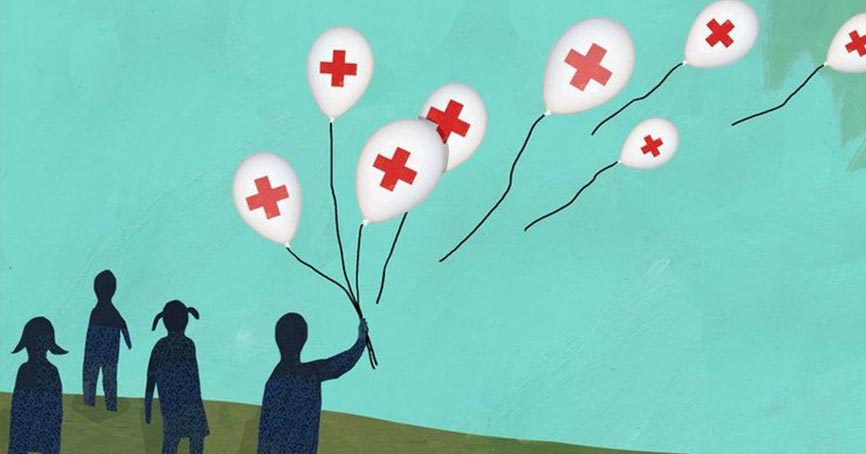What Is Slipped Disc?
Slipped disc, also known as a herniated or ruptured disc, is a condition that mainly affects the lower back or legs of an individual.
It usually occurs when inner disc vertebrae push against a weakened yet still an undamaged annular wall. As a result, it presses on the nerves near the disc, resulting in pain.
In some cases, symptoms of a slipped disc can lead to numbness or weakness in limbs. However, in other cases, people experience no pain, particularly if the disc does not press on any nerves.
Symptoms of Slipped Disc
The symptoms mainly occur if the prolapse puts pressure on or irritates a nerve. In some cases, the slipped disc symptoms are usually unnoticeable. However, they get worse with time. The common symptoms of slipped disk include:
- numbness and pain, most commonly on one side of the body
- pain that worsens at night or with certain movements
- neck pain, especially in the back and on the sides of the neck
- pain that extends to the arms or legs
- severe pain after standing or sitting
- spasm of the neck muscles
- pain even while walking short distances
- unexplained muscle weakness
- aching, tingling, or burning sensations in the affected area
What Are the Causes of a Slipped Disc?
Though slipped disc can happen at any age, according to a study, it is highly prevalent in people aged
30-50 years.
With growing age, spinal discs lose some of their water content. This decrease in fluid level leaves the discs less supple and more prone to split. Other than this, factors that increase its proneness include:
- weight: being overweight puts extra stress on the lower back resulting in back pain.
- genetics: often, slipped disc or herniated disc might be due to genetics. If it runs in the family, chances are an individual can develop it.
- livelihood: people with physically demanding jobs that involve lifting heavy loads, pushing, pulling, or twisting are also prone to develop slipped disc.
How Is It Diagnosed?
Primarily, a doctor diagnoses symptoms of the slipped disk with a physical exam. They may check:
- sensitivity to touch
- muscle strength
- walking ability
- range of motion
- reflexes
- tender regions in the back
After a physical exam, a patient is suggested to undergo a CT scan or MRI scan to identify the location of the disk and the affected nerves.
Slipped Disc Treatment Options
A primary slipped disc treatment generally involves a combination of physiotherapy and medication. However, in severe cases, if the pain continues for more than six weeks, other treatment options are also considered. For instance:
Surgery
This medical procedure is opted if:
- symptoms have not improved with physiotherapy and medications
- there is an indication of severe nerve compression
- there is an increasing weakness in muscles
It involves removing part of the damaged disc. The doctor opens a small hole in the stomach and approaches the spine from the front of the body. The procedure is commonly known as an open diskectomy.
It is a minimally painful procedure and is highly successful for herniated or slipped discs. After completion, the surgery relieves the pressure on the nerve tissue and alleviates the pain.
Artificial Disk Replacement
Artificial disk replacement involves replacing a painful or damaged disk in the lower part of the spine with an artificial disk made with a combination of metal and plastic or only metal. This disc is the replica of the natural spine that helps in performing the same form and function.
Artificial disk replacement is performed on the lumbar spine (lower back). The artificial disc surgery significantly reduces the risk of more wear and tear than normal surgery.
Is It Possible to Prevent a Slipped Disc?
While it is not possible to eliminate the risk of a slipped disc, taking some preventive measures can help ensure long-term spinal health. Mentioned below are some tips to prevent symptoms of slipped disc.
- Maintain a healthy weight as excess weight causes stress on the discs.
- Keep the athlete quotient in check. Sports such as football, gymnastics, and ice hockey can be harsh on the spine, increasing the chances of a disc injury.
- Maintain a correct sitting posture. Use a chair with a proper backrest. For correct position, place a pillow or rolled towel behind the back to maintain its normal curve.
- Exercise regularly. Keeping physically fit and strengthening the muscles that support the spine can boost overall spine health.
- Take care while lifting heavy objects. Even if an individual is strong, they can still injure their lower back while lifting a heavy object incorrectly.
- Target the hamstrings. Tight hamstrings are a cause of back pain. Try stretching and maintain their movement.
- When weight-training, do not excessively pressure the spine by using heavy weights overhead or across the shoulders. Ensure proper body mechanics by performing exercises in front of a mirror.
- Practice yoga for vitality and flexibility.
- Sit in a position with the feet flat on the floor or keep them on a footrest. Stretch and change the position every once in a while.
Slipped disc back pain may reoccur, whether or not one has had treatment. Therefore, it is important to be pre-cautious to prevent symptoms of a slipped disc. With proper care through core exercises, correct posture, and back ergonomics, it evitable to avoid slipped disc and remain pain-free.

 May 14, 2018
May 14, 2018
 May 30, 2018
May 30, 2018 May 10, 2018
May 10, 2018 May 17, 2018
May 17, 2018